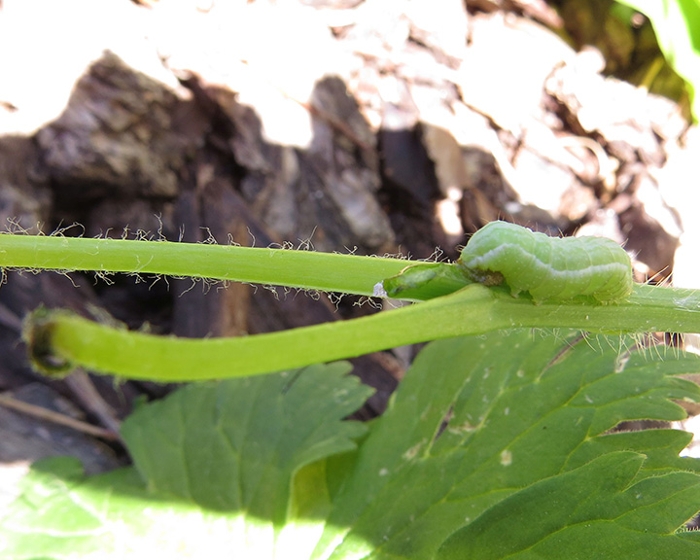
Delphinium worm
Damaging
Delphinium, larkspur and monkshood – the tall, elegant notes of colour we so look forward to in mid-summer – are prone to damage from delphinium leaftier, also called the delphinium worm (Polychrysia esmeralda; syn. P. moneta). This is a common moth native to the prairies whose larvae do all the damage to these specific host plants.
The trouble begins in spring: leaftier eggs hatch in late April or early May just as the plants are putting out their first flush of green growth. The larvae feed on the tips of plants, but will invade the stems and eat leaves too. One sign that you have leaftier is when the tips look like they have been tied together. Look inside the package to find the leaftier and dark frass (excrement). Leaftiers are almost exactly the same colour as the plant.
There is a simple way to control this pest without using insecticides.
Control:
- When the plants are 15 - 20 cm tall, cut off the stems and leaves to 4 – 6 cm above ground level. This removes the food source for the larvae. Put the debris in the garbage, not in your compost. The plant will grow again - this time without the leaftier.
- Otherwise, handpick the leaftiers, pinch out the tips and remove any affected stalks.
Sources:
Williams, S.; Skinner, H. (2011). Gardening, naturally: A chemical-free handbook for the Prairies. Regina, Saskatchewan: Coteau Books.
Polychrysia esmeralda - University of Alberta E.H. Strickland Entomological Museum

